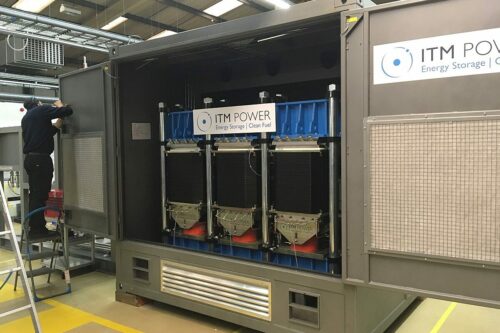- IIT-Madras researchers have created alkaline water electrolysis to produce green hydrogen from seawater, reducing freshwater dependency.
- The technology is in its early stages and will require a few more years to be commercially implemented, provided it proves successful.

Green hydrogen is produced by electrolysis, using renewable energy to split water into hydrogen and oxygen. It’s clean and vital for decarbonising heavy industries. However, scaling up the process may worsen freshwater shortages.
Researchers from the Department of Physics at the Indian Institute of Technology (IIT) Madras have created a low-cost prototype to generate green hydrogen (GH2) from seawater. The researchers aim to produce GH2 from seawater, reducing freshwater dependency. The prototype electrolyser is under development, and commercialisation may take time. Global commercialisation of similar prototypes is limited. The team has replaced metals with carbon-based electrode support material, minimising corrosion risks.
Seawater electrolysis for hydrogen production faces challenges of chlorine corrosion and slow hydrogen evolution, hindering its potential. Addressing these issues is crucial to enhance efficiency and effectiveness. The researchers have utilised transition metals (iron, copper, etc.) as catalysts to improve oxygen and hydrogen production. These metals have various industrial applications, like electronics and alloys. These innovations allow seawater to be used similarly to regular water for hydrogen and oxygen generation.
Can the future be saltwater for GH2 production?
India currently consumes six million tonnes of grey hydrogen from natural gas with low-carbon methods. However, generating an equivalent amount of green hydrogen would require around 132-192 million tonnes of water. Globally, researchers explore two ways to use seawater for GH2 production: desalination to remove salt before electrolysis or direct use of seawater. The researchers explain that desalination is an established method to produce clean water from seawater for GH2 production. However, splitting seawater poses challenges. Most projects use renewable-powered electrolysis for hydrogen extraction. Yet, desalination and purification technologies are costly for efficient electrolysis.
Technology yet to mature
Direct seawater splitting offers an eco-friendly route for clean hydrogen production, but saltwater corrosion hinders mass GH2 production. Global efforts aim to utilise seawater for green hydrogen. The research on seawater electrolysis is ongoing but is at a lower technology readiness level (TRL) in maturity. Advancing from TRL 3 to TRL 7 or 8 is necessary for commercialisation, which may take a few years. The techno-economic viability is yet to be determined. The researchers believe hydrogen production from seawater has yet to reach the industry prototype and commercialisation stages globally. However, the technology shows promise and will be commercialised soon. They also claim that their technology can utilise industrial and domestic wastewater, with plans to conduct experiments using industrial wastewater.






